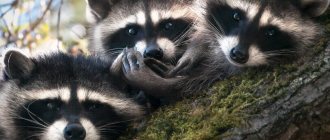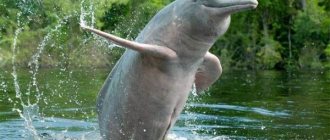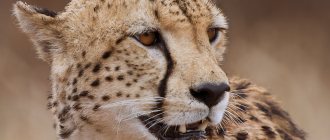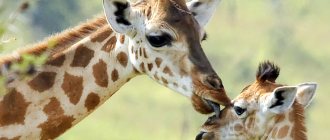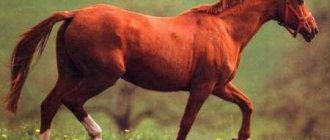The fauna of planet Earth is much more diverse than most people are accustomed to believe. Man knows that the planet is inhabited by different living creatures, but only zoologists realize how great this diversity is. In this review, we have selected 15 unusual animals that give an idea of how sophisticated and diverse the imagination of nature can be.
When we hear the word “animal,” we think of pets, farm animals, and wildlife that we have seen in photographs, films, and TV shows. But if you dig deeper, you can find yourself in an amazing world, against the backdrop of which even films about extinct species will no longer be so impressive, because amazing creatures live next to us that we have never even heard of.
If you go back to the school curriculum and remember the classification, then animals include 10 types of living beings:
- Sponges.
- Bryozoans (protostomes, multicellular marine animals, no more than 3 mm).
- Flatworms.
- Roundworms.
- Annelids.
- Coelenterates (jellyfish, hydra, coral polyps).
- Arthropods (insects, arachnids, crustaceans).
- Molluscs (shellfish, bivalves, gastropods).
- Echinoderms (starfish, sea urchins, snaketails).
- Chordata.
It is the chordates that we think of when we talk about animals. This includes mammals, fish, birds, amphibians, reptiles and humans. Below we will talk about representatives of several types of animals that deserve to be included in the selection of the most unusual.
Rating:
- Japanese spider crab
- White leaf-nosed bat
- Venezuelan poodle moth
- Glass frogs
- Maratus Jactatus
- Striped tenrec
- Pangolins
- Glaucus Atlanitcus
- Harpy eagle
- Brazilian yabiru
- Axolotl
- Smallmouth macropinna
- Irrawaddy dolphin
- Tasmanian devil
- Darwin's bat
Poodle moth
When you first look at this creature, you get the impression that it is a toy or a phenomenon created using Photoshop. The miracle moth has huge black eyes, fluffy legs and bizarrely shaped antennae. For the first time, representatives of this family were captured by photographer Arthur Anker during a walk through a national park in Venezuela. According to crypozoologist K. Shuker, the Venezuelan moth is a relative of bear butterflies.
Lemur
PHOTO: Flickr / Max Wolfe https://www.flickr.com/photos/leeadlaf/
The small, light, big-eyed and sociable animal does not seem like a dormouse at first glance, but lemurs sleep a good 16 hours a day. Follow their example if you are accused of laziness: make your eyes wide and cover your mouth with your hand.
PHOTO: Noel Reynolds https://www.flickr.com/photos/ [email protected] /
Malayan sixwing
The representative of the forests of Southeast Asia has a small body size, half of the length is taken up by the tail. With a body length of up to half a meter, the limb span is 1.2-1.5 m. Gray-brown fur with white patches allows it to camouflage among the bark of old trees. Animals spend their entire lives in trees. Move from one tree to another by planning. The maximum flight range is 1.3 meters.
Sixwings feed on plant food, which they obtain at night.
Bower birds
Bowerbirds are distinguished by their innate sense of beauty. During the mating season, males attract females in an extremely interesting way - they build huts for them, decorated with flowers, pebbles, fruits, feathers and even shiny objects stolen from people. Moreover, birds manage to create real works of art. Birds know how to correctly combine colors and always carefully select decorations for their huts.
Bowerbirds also have another amazing quality. They learn very quickly from their relatives. For example, young males do not always manage to build a beautiful hut the first time. They carefully observe more experienced males and learn from their example.
Low intelligence of pandas
On the Internet you can often find videos of clumsy pandas falling from trees or artificial elevations. This is due to their lackluster thinking abilities and weak vestibular apparatus. And, of course, the brain-to-body ratio. It's also likely that pandas are so clumsy because of their plant-based diet.
From a biological point of view, pandas are omnivores, meaning they can eat both meat and plants. But the stupid black and white bears don’t even think of trying anything other than bamboo. They feed on it throughout their lives, and as you remember, plants have low nutritional value. In addition, pandas are considered stupid animals not only because of their fundamental vegetarianism. They are also terrible parents.
Female pandas sometimes give birth to two cubs at a time. It would seem like double joy; any mother would be happy. Not Mama Panda. This animal, somewhere at the very end of the metric scale of mental ability, chooses its favorite. The second cub, which somehow did not like the mother, is doomed to death. Fortunately, this rarely happens to pandas living in nurseries and zoos today. The abandoned cub is fed by people, and then carefully monitored so that it does not inadvertently kill itself due to its low intellectual abilities. After all, pandas cannot remember where they screwed up last time and avoid this danger. The situation is almost the same with the favorites of the majority of the world’s population—seals.
Crocodile
They mostly lie in shallow water, and in the morning and evening they crawl ashore to warm themselves.
They hunt once a month, and, having filled their stomachs, spend the rest of the time digesting what they eat. If necessary, they can survive without food for about a year and a half.
Hippopotamus
PHOTO: Flickr / Valkrye131 https://www.flickr.com/photos/valkrye131/
It seems that such a large body should be very cheerful and agile. Well, no. Hippos sleep 16-20 hours a day. They also love to yawn sweetly, which instills fear and horror in everyone around them.
PHOTO: Flickr / Camilla Faurholdt-Löfvall https://www.flickr.com/photos/cumulius/
Snakes
These creatures inspire terror in millions of people on the planet. And even those who do not fear these reptiles will most likely try to kill them. After all, there is a well-founded concern for children or pets. In fact, fear is most often unfounded. After all, only 15% of the total species diversity of snakes are poisonous. At the same time, truly dangerous individuals are easy to distinguish. No matter where a person lives, there may only be a few truly dangerous snakes nearby. And they are more afraid of us than we are of them. Why should a snake waste its priceless venom on prey that it cannot even eat? So a frightened animal will try to run away and hide somewhere. We must also remember that predators play an important role in balancing the numbers of the species they hunt. Snakes destroy the weakest and sickest, thereby protecting the rest from uncontrolled reproduction and hunger.
Flatworms
Flatworms are hermaphrodites. Before mating, they have real fights. Moreover, individuals use their own genitals as weapons. These primitive creatures fight for the right to become a father, who, after mating, proudly retires instead of caring for the offspring. The worm that manages to infect its opponent with its genitals is declared the winner. The loser has to bear offspring. It is not surprising that such battles can last for hours. After all, every flatworm wants to become a father, not a mother.
Turtles
Turtles Turtles
- there are terrestrial and sea, in turn, terrestrial are divided into land (the main food is plants) and freshwater (feed on fish and shellfish), some types of turtles weigh up to 900 kg. Since turtles' home is their shell, they have nowhere to rush, they are not afraid of predators, and they can live quietly for up to 200 years.
Interesting: Unique species of animals - list, names, descriptions, photos and videos
Cuckoos
Cuckoos don't really like to take care of their chicks. Therefore, they often throw their eggs into other people's nests. However, they approach this matter with all responsibility. The negligent mother first observes the future adoptive parents. This is done in order to establish the exact time when eggs will appear in their nest. Then she simply adapts to it, adjusting the speed of development of her egg.
To do this, the cuckoo periodically places it in cold water. When the chick is about to be born, the bird quietly throws the egg into someone else's nest. Little cuckoo chicks often also act unsightly: they easily throw other newborn chicks out of the nest.
Unusual animals of the world
Giant isopod
The giant isopod, which looks like a woodlice or Colorado potato beetle, grows to 19-37 cm in length and reaches a weight of about 1.7 kg. These incredible creatures live underwater at depths of 170 to 2000 meters. They lead a solitary life and are scavengers, feeding on dead whales, squid and fish. But they are also adapted to long periods of fasting, going without food for up to 8 weeks.
Snakehead
This scary-looking fish is called a snakehead. It has an insatiable appetite, eating almost all the fish in a pond or lake and even its own young. In addition, the snakehead can crawl on the ground and remain on land for up to 3 days in search of new food sources. Once they are on the ground, they are capable of eating any small animals in their path. There have even been cases of snakeheads attacking people.
Saiga antelope
The saiga or saiga antelope is one of the world's oldest mammals, living on Earth along with saber-tooth tigers and woolly mammoths 250,000 years ago. Although at one time they were considered extinct, they are now often referred to as living fossils.
Australian snake-necked turtle
Looking at it, it looks like someone passed a snake through a turtle. This species of turtle has a neck so long that they cannot pull it back into its protective shell. However, they have a secret weapon, releasing a foul-smelling liquid when in danger.
Octopus Dumbo
Grimpoteuthis, or as it is also called the octopus Dumbo, looks like the famous Disney character - the flying elephant Dumbo and is distinguished by funny ears. It lives at depths of 900 – 4900 meters below sea level and is considered the deepest-sea octopus ever discovered. There were cases when representatives of grimpoteuthys were found at a depth of 7000 meters.
Proboscis
The proboscis monkey is a medium-sized monkey that can only be found in the rainforests of Borneo. Male proboscis monkeys are the largest monkeys in Asia, and with their large, fleshy noses, they are probably the most unusual mammals.
Scorpion flies
From a distance, these insects look like ordinary dragonflies, but if you look at them under a microscope, you will see a real scorpion tail. Fortunately, it does not sting and is presented to females as a gift.
Legless lizard
There are two types of legless lizards: the copperhead and the yellow-bellied lizard. Outwardly, these creatures are very similar to snakes. Because they don't have legs, they have to crawl instead of walk. However, lizards move well because their bodies are able to wriggle. They are distinguished from snakes by the presence of movable eyelids, a shoulder girdle, as well as a rigid connection of the elements of the jaw apparatus.
Rats
These animals represent horror. A terrible picture appears before your eyes, like dirty rats swarming in a decomposing corpse. The reputation of these animals as carrion eaters appeared quite a long time ago. It was rats that were declared carriers of the bubonic plague. This disease is actually carried and spread by rodents. But today many experts come to the conclusion that the epidemic of the “black” plague was not caused by rats. In fact, these animals are quite shy. They rarely bite. Rats generally make good pets. They show more intelligence and dexterity than guinea pigs and hamsters. And decaying meat, although indeed part of the diet of rats, is not at all their favorite dish.
Black Widow
Everyone knows that this type of spider is one of the most dangerous on Earth. In fact, this is not true at all. These spiders behave absolutely non-aggressively towards large animals. And the black widow bites very rarely, and it is not always fatal. A person is at risk of death if he is a child, an elderly person, or susceptible to disease. And the appearance of the spider scares everyone. Moreover, they are surrounded by the aura of a story about devouring their males, which gave the species its name. In fact, of the variety of widow spider species, only 2 out of 31 eat their partners. But what to do - the male is so weak and looks so appetizing. But the female still most often lets him go. Often she will even hang over him for a short time on her web. This measure just discourages other hunters from feasting on the poor spider.
See also: The longest snake was caught by a British TV presenter in the Amazon
Unusual animals (photo)
Water deer
This miniature deer resembles a vampire when viewed closely, thanks to its large, curved, saber-shaped fangs that reach up to 8 cm in length. However, there is no need to worry, these deer are quite harmless and there have been no cases of them attacking people.
Blue Parrotfish
This strange but wonderful fish is considered a delicacy in many countries around the world. In Polynesia, it is served raw and was once considered the “food of kings.” They are classified as parrotfish that are able to envelop themselves in clear mucus to protect themselves from predators. Males can grow up to 120 cm in length.
Red-lipped damselfish
It looks like this fish has decided to wear bright red lipstick. Red-lipped fish live at a depth of 30 meters in the Galapagos Islands. Interestingly, they are better suited to walking on the seabed rather than swimming. When the fish reaches maturity, it begins to use its dorsal fin to lure prey.
Axolotl
Axolotl refers to the larvae of the Mexican Ambistoma or Tiger Ambistoma. The larvae of this species do not undergo metamorphosis, and the adults remain aquatic and have gills. The axolotl is highly valued by scientists for its ability to regrow new limbs and even body parts, including a spine and part of the brain if they are lost.
Cyclops shark
The Cyclops shark is one of the strangest creatures discovered by scientists in 2011. A large eyeball is the result of a disorder called cyclopia, which also occurs in humans. Researchers have found Cyclops shark embryos several times, but the fact that they have not been found outside the womb suggests that Cyclops sharks do not survive in the wild.
7 Scariest and Strangest Mouths in the Animal Kingdom
Okapi
The okapi (Ornithorhynchus anatinus), or forest giraffe, lives in the forests of the Congo. This animal is very rare, and the story of its discovery is one of the most notorious zoological sensations of the 20th century.
There is a sad donkey in front, a zebra in the back, and overall a forest giraffe. Okapi has such a long (up to 35 cm) tongue that it can clean its ears with it. The coloring is also very unusual: the body is reddish-brown, the legs are white with dark transverse stripes on the thighs; the tail ends in a tassel.
Zebu
Zebu (Bos taurus indicus) is a humpbacked bull native to Southeast Asia. This is the most ancient and mysterious representative of bovid ungulates. Scientists around the world are puzzling over its origin. The unusual animal has a high, prominent hump on its back and short, widely spaced horns.
The health of humpbacked bulls is excellent: they easily tolerate diseases that kill cattle of other breeds. Domesticated zebu are mainly used as draft and pack animals, and in some places in Southeast Asia, zebu racing is very popular. Of course, a humpbacked bull is not nearly as graceful as a thoroughbred horse, but it can compete with any racer.
- Naked mole rat...
- Naked mole rat
- Why do people...
- Scientists…
- How long do they live...
- The fastest animals
a lion
PHOTO: Flickr / Rennett Stowe https://www.flickr.com/photos/tomsaint/
The king of beasts rarely has to strain: lionesses hunt for him. So the head of the pride spends 18-20 hours sleeping. Or he can sleep for the entire 24 hours, depending on what the prey is.
Parasites
These concepts are very broad. Not a single piece of our planet can do without these creatures. And parasites outnumber other free-living life forms. The word “parasite” itself is associated with uselessness. There was a time when science placed parasites a step lower than they occupy now. Biologists say that parasitic organisms have a great impact on the environment. Every animal on the planet has parasites; they directly affect its health and even its mood. The very theory of the origin of life, oddly enough, proves that parasites are full participants in the natural balance, like other life forms. Over time, many of these organisms have adapted to not harm their host, and those who have remained the same occupy an important place in controlling the number of living beings.
source
If you find an error, please select a piece of text and press Ctrl+Enter.
Aye-aye
The fluffy mammal belongs to the species of hand-footed animals. Little arms live in the forests of Madagascar. The only representative that has survived to this day has fluffy black fur with brown markings, an excessively long tail and elongated thin phalanges. Mammals are active at night. Aye-aye have a peculiar structure of jaws and teeth. This fact has caused controversy regarding the group to which the animals belong. After much research, scientists found out that this is a special group of lemurs.
We also recommend reading:
The largest dog breeds What is domestication in animal husbandry Why you should get a cat: reasons voiced by scientists Euthanasia of animals
